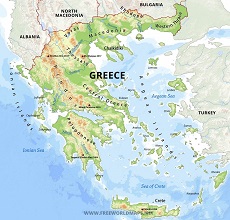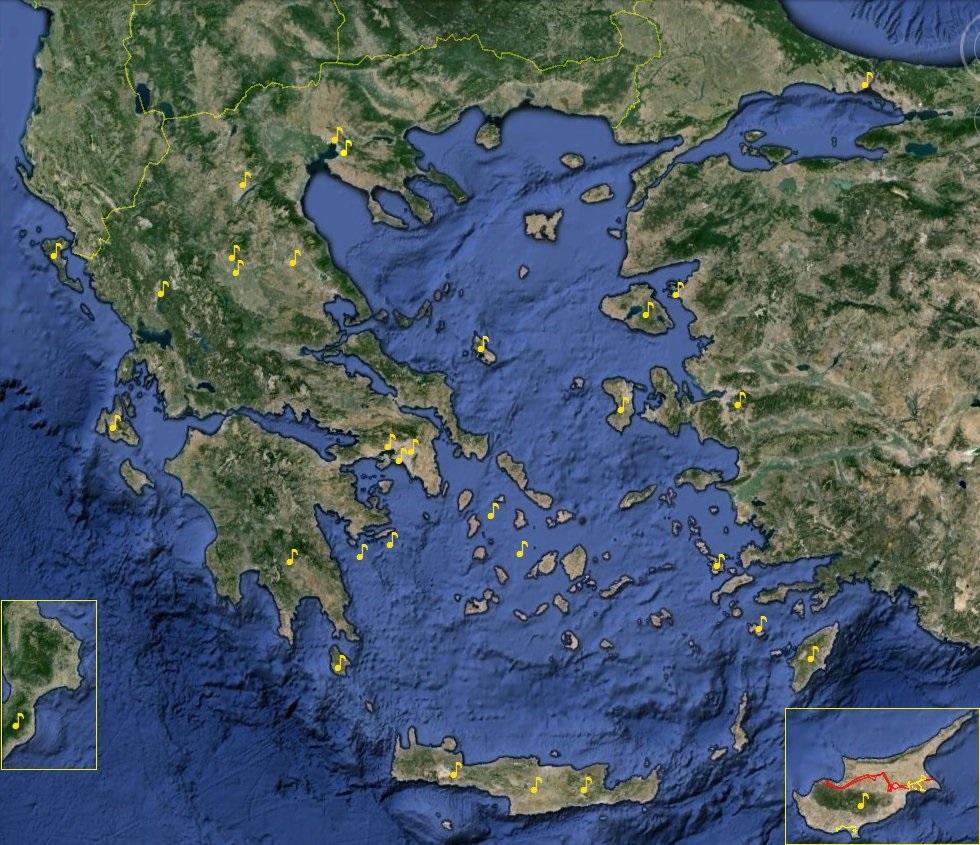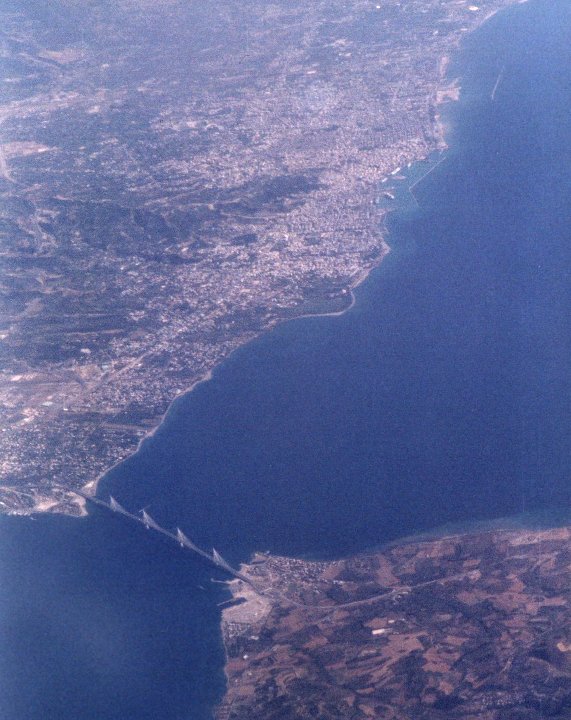Greece and Greek Music

Greece and Greek Music |
 |
Greece is a country of around 10.7 million people
(2011 census) in the south-east
corner of Europe.
|
 |
Hover over the notes on the following Google Earth-made image of Greece, to listen to Greek songs in YouTube, which are related to the place of the note:

 |
Haven’t you been asked, several times, “What kind of music do you like?” Many people have asked me, the author of this page, the same question. I’m afraid I disappoint my friends with my answer every time, because when people ask you this question they expect to hear you describing the same kind of music that they like. People’s preferences, however, are rarely identical, and, apparently, they’re personal. So I disappoint my friends by telling them that, besides classic music, I also like the sound of Greek bouzouki (image on the left). See, I grew up with the sounds of bouzouki playing in my head. If you grew up with the sounds of piano and violin, congratulations — we’re different. Now, when I say “the sound of Greek bouzouki” I don’t mean what you probably have in mind from movies and such. The poor instrument, from an “instrument of the poor”, was turned into a tourist attraction and a kitsch symbol of Greek culture in the second half of the 20th century. If you’ve heard the barbaric sounds of Hollywood productions and of ersatz “recreators” of Greek music, forget it; that’s not bouzouki. This is bouzouki: |
I apologize for being unable to provide the entire songs, above, so as to avoid copyright violation issues.
| Note 1: My Turkish friends find that the word “bouzouki”
sounds funny, because in Turkish “bozuk” means “broken”.
And that’s right: the name of the instrument comes from “broken
saz”, an old Turkish argot word for a variation of saz,
a major Turkish string instrument. Greek refugees from Asia Minor
(modern day Turkey) brought the instrument to mainland Greece
after the events of 1922-23. Note 2: Many thanks go to my cousin Iosif Iosifidis (Ιωσήφ Ιωσηφίδης) for resurrecting the first piece from an old LP. Ξάδελφε, χίλια ευχαριστώ! .
|
Here is a picture that I took from the airplane window while flying over Greece one summer day (please do not copy and redistribute without written permission):

Patra, and the bridge of Rio – Antirrio
At the top is the city of Patras (Πάτρα), the fourth largest city of Greece (after Athens, Thessalonica, and Piraeus). At the bottom you see the bridge of Rio-Antirrio (Ρίο-Αντίρριο) that connects Peloponnesus with the mainland at the point of closest proximity, joining the two little towns of Rio and Antirrio. This bridge was envisioned as a possible project in the 1920’s, but was finally constructed and given to the public in 2004. (That gives a sense of how long it takes to complete a public work of utmost importance in Greece.)
General
information about Greece.
Information about the
history of Greece.
Latest
news from Greece and the Balkan region.
And a Greek newspaper (TA
NEA),
in case you can read in Greek.